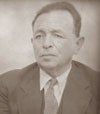|
|
||||
William BeynonWilliam Beynon (1888 - 1958) was a tireless and talented individual who was first hired by ethnographer Marius Barbeau in 1915 and who worked intermittently with him for more than forty years, during which time he made significant contributions to the body of knowledge about the Coast Tsimshian, Southern Tsimshian, and Gitxsan. Although not formally trained as an anthropologist, Beynon also conducted field work on behalf of a number of other anthropologists and linguists, including American anthropologist Franz Boas during the mid- to late-1930s. Beynon was born and raised in Victoria, British Columbia, the son of a Welsh father and a Nisga'a mother. Although he was educated in Victoria, his mother insisted that he learn to speak Tsimshian as well as English. She also taught him his responsibilities as a hereditary chief, a position he inherited, as a young man, from his maternal uncle. Beynon's wife was the niece of the chief of Kitkatla and Beynon occupied a position of high status in Coast Tsimshian society. Beynon was hired as an interpreter by Barbeau in 1915 and soon occupied a position of trust. Trained by Barbeau to write Tsimshian using a phonetic system developed by Edward Sapir, he was skilled at recording and translating myths and the texts of song. By 1916, Beynon was conducting field work independently on behalf of the Museum. To support himself, Beynon often worked in the fishing and canning industries during the summer months and pursued his research at other times of the year. As Museum funds permitted, he continued to work with Barbeau almost until his death in 1958, organizing expeditions to coastal and inland villages, recording information from informants as well as eye witness accounts of feasts, rituals and ceremonies, and translating and interpreting a wide variety of Tsimshian family histories and myths. BibliographyAbout William Beynon:Websites:
Publications:
|
Bibliography · Links · Credits · Index






